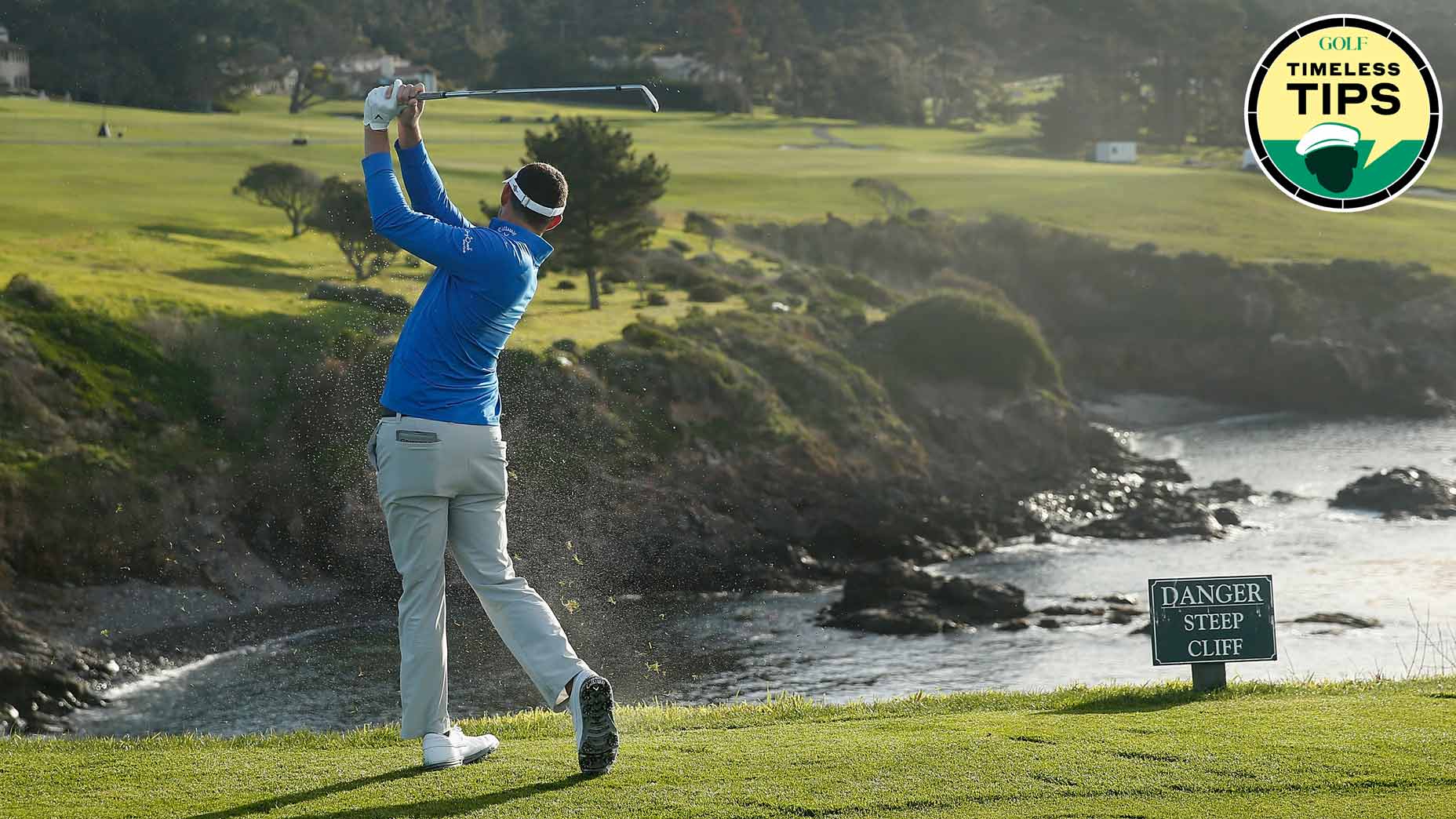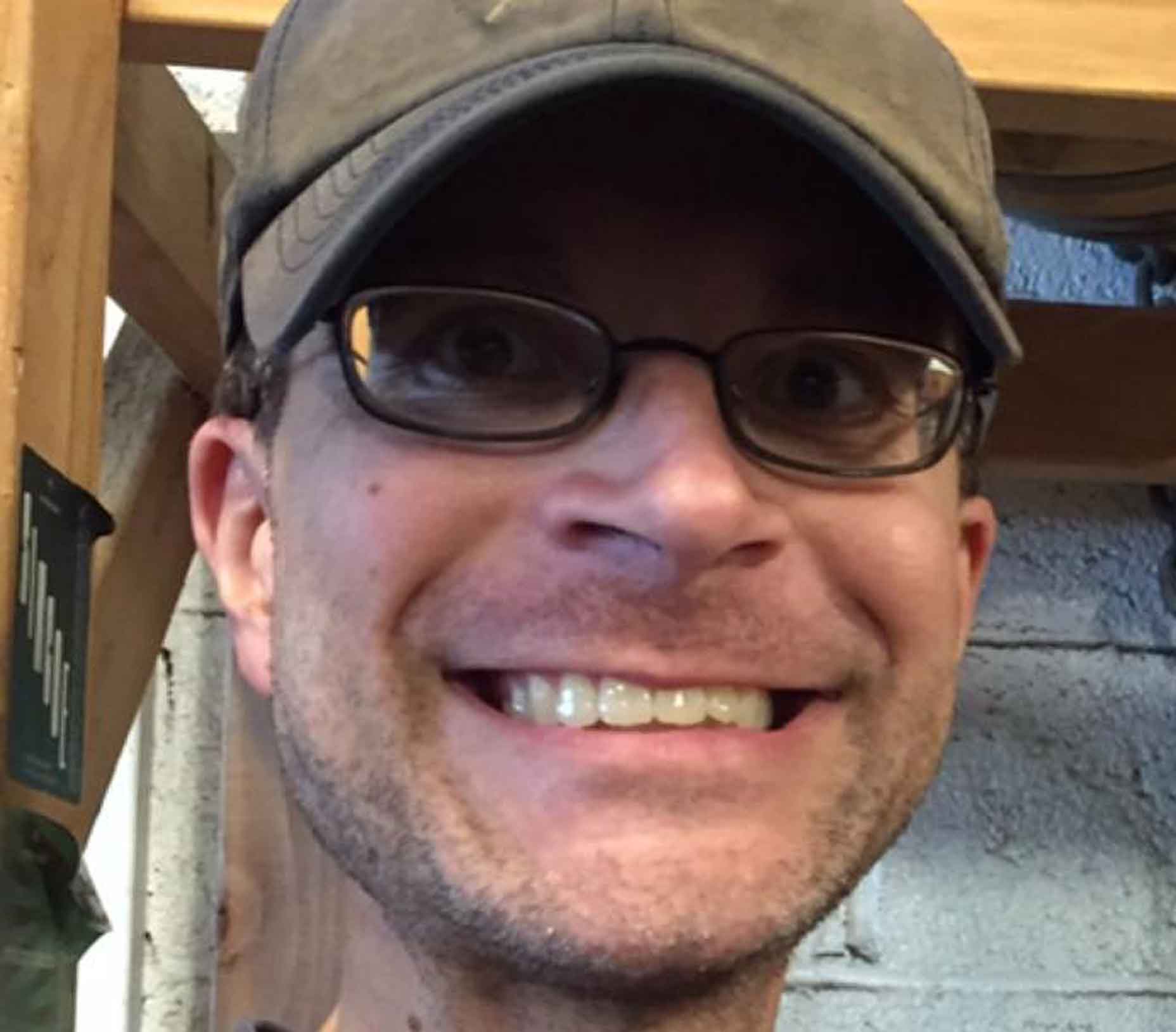3 problem areas for amateurs, according to a pro-am vet. (But they’re fixable!)

Mel Reid last August during the Women's Open.
Getty Images
Let’s start with some rough math.
Mel Reid has been a pro for 17 years. And over those 17 years, she’s played in dozens of tournaments. And across those dozens of tournaments, she’s participated in countless pro-ams. And during those countless pro-ams, she’s seen numerous amateurs.
And from those numerous ams, well, she’s seen some things.
But patterns form. From all of those years and tournaments and pro-ams and amateurs, history repeats itself. As do golf swings.
And it makes Reid a wonderful source to answer this question, which she was asked by longtime instruction Claude Harmon III during Harmon’s latest Son of a Butch podcast:
What are the three things Reid sees regularly from her pro-am partners — and what does she think is the “lowest-hanging fruit” for them to improve?
Reid quickly answered.
Amateurs struggle with distance control, she said.
Amateurs struggle with deviating from one club around the green.
Amateurs struggle with putting pace.
Here was the complete exchange from the podcast (which you can listen to in full here):
“Jorge and I give golf lessons to regular golfers,” said Harmon, referring to Reid’s coach, Jorge Parada. “You are not a regular golfer. You are a professional golfer and an elite golfer. You play pro-ams with the people that when we’re not on Tour that we teach on a regular basis. It’s the average, everyday handicapped golfer. Not scratch. Sometimes they’re weekend golfers. Sometimes they’re recreational golfers. You play pro-ams every time you’re on tour. Give me the top three things that you see on a regular basis from your pro-am partners and what do you think for the majority of them is the lowest hanging fruit for them to improve.”
“They certainly don’t hit it as far as they think,” Reid began. “They’ve hit like one 7-iron 200 yards once and so they think that they should hit their 7-iron 200 yards every time. That’s No. 1. I feel like they just straightaway grab a lob wedge every time they need to chip. You can chip with a 9-iron, you know. I think that would help their short game tremendously. And honestly pace on the greens. I think that they just try to smash it in the hole all the time, or you know, they leave it 8 feet short.
“So that would be my three things. I think that they actually need to understand their average distance, not their highest distance with each club. Chip with not a lob wedge. It’s hard to chip with a lob wedge especially on grainy grass, especially here in Florida. You got to practice that a lot. And just honestly pace on the greens. I think that if they improve them three, I think it would make a huge difference to the average golfer.”
Notably, the fixes to the problems aren’t terribly difficult to make; they just take time. For distance control, the short answer is to club up — and to come to a full and honest understanding of how far you hit. For club selection around the green, the adjustment should be to know when to play a different club on chips and pitches — and to learn the results of those clubs during practice or play. And practice or play is the best medicine for putting-pace improvement.
Of course, this website here is a good source for any and all issues, too.
Also during the podcast, Harmon and Parada talked about a concern they’ve seen from amateurs, along with a story and an answer to it. We wrote about that last week, and you can find it here, or immediately below.
***
The 25-handicap was sweating. The 25-handicap was playing her club tournament, yes. But the 25-handicap was a 25-handicap playing her club tournament, and the 25-handicap darn near needed a towel to dry her mind off.
So Jorge Parada took her for a walk.
Parada was telling the story this week on the Son of a Butch podcast — which you can and should listen to here. Parada is the director of instruction at Liberty National in New Jersey, and a conversation among host Claude Harmon III and one of Parada’s students, LPGA pro Mel Reid, centered around flaws from amateurs. For the non-Mel Reids.
For the 25-handicappers.
Parada had a story about one in particular. We’ll let him tell it, with thoughts along the way.
He was prompted by this from Harmon, an instructor himself:
“I think the biggest value that I have to a student isn’t standing on a driving range with them. It’s actually going out on the golf course and just going, hey, don’t hit that shot, hit this one. No, don’t hit this club, hit that one. No, don’t take that target line, take that one. No, don’t try and carry that, lay-up, play smart. And I always say to players, play for the pars, and the birdies kind of get in the way. But what I think what everybody tries to do is, everybody just tries to play for the birdies, right?”
Right, Parada?
“I had this situation that happened two years ago with one of our members at Liberty,” Parada said on the podcast.
There was a foundation with the 25-handicap. Great swing. She was athletic. But she didn’t play much. And she wasn’t confident going into an event at Liberty.
Parada and his student went to the first. Dogleg-right par-4. Water on the right. Heavily bunkered throughout. Parada said the 25-handicap told him she would typically hit a 3-wood.
“I’m like, there’s a creek on the right, there’s a bunker on the left — no, hit your 7-iron,” Parada said.
Really? That wouldn’t even get her to the fairway.
“Seven-iron.”
She hit a 7-iron to the rough. It didn’t get to the fairway. Now what?
“I’m like, OK, now hit a pitching wedge to that layup area where your 3-wood would be,” Parada said.
She did.
“Now hit another pitching wedge to the right side of the green.”
She did.
“OK, two putts, she makes a bogey.”
Interesting. They go to the 5th hole, par-4 dogleg left. There’s water on the left. Out of bounds on the right. It’s narrow. Parada told the 25-handicap she could hit either driver or 3-wood. She hit, and they walked ahead.
The hole gets narrower. She’d try to work an 8-iron to the green.
“I’m like, no,” Parada said on the podcast, “we’re going to hit pitching wedge short of the green — that’s a 40-yard landing area.”
She hit pitching wedge. She hit another to the green. She two-putted. Bogey.
“And I’m like, OK, you bogey, bogey, right? Take that,” Parada said. “You’re one-under. We’re playing holes that you have two strokes on some of them.”
They did a similar exercise on another hole. Afterward, they talked.
“So she said, I never thought about playing this way,” Parada said on the podcast. “I said, what I want you to do … is I want you to add the strokes and put ‘my par’ — write ‘my par’ and put sevens, fives, six, whatever it is.”
And then?
“She shoots 82 and they win. …
“And she’s like, I never thought I could play that good. I go, just play to your skill. You played to your level, right?”
Now, there are some obvious disclaimers here. This exact blueprint won’t work for everybody. Courses are different. Players are different. Player skill levels are different. You have to be right with the shots that you do hit, too. Who’s to say that the 25-handicap wouldn’t hit one of those wedges into trouble?
Then again, she decreased her chances of doing so. She repeatedly played to her strengths. She played away from weaknesses.
It’s a universal lesson.
“I think everyone thinks their level is much higher than it is,” Harmon said on the podcast. “I think that’s because we watch people like you, Mel, and we watch golf on TV, and we watch all you great players do things and we’re so predisposed to the numbers that you all are hitting and the shots that you all are hitting. Certainly on the men’s side, it’s rare that there’s a par-5 that everybody in the group isn’t going for. On the PGA Tour, the majority of the guys sure as hell aren’t laying up. They’re going to try and smash it down there and try and get it. And I think the viewers watch the way the best players in the world play and it’d be like watching Max Verstappen drive his Red Bull F1 car and then going and getting in your Toyota Corolla and go try and do the same thing. It’s just not going to work, right? And on top of that, you don’t know how to drive anyway. So the car is not going to do what you’re trying to get it to do and you don’t know how to drive those speeds. I find it fascinating.
“I don’t think there’s any other sport that people play recreationally where I think golfers are at the top of the list of over expectations. Their expectations are their golf swings are going to improve as the day goes on, that their golf swing’s going to get better on the golf course. So they’re just going to keep trying stuff on the golf course because they’re going to improve as the round goes on. That s**t just doesn’t happen.”
Said Parada: “I mean, each person has a certain level of skill. And that skill gives them variance. If you want the variance to be smaller, you must improve your skill. And if you want your score to be better, you must manage your variance. But you can’t do both at the same time. So if you want your skill to improve, go and improve your skill, that’s fine. It might take a month, it might take six, it might take five years — I don’t know how long it’s going to take, but go improve your skill. If you want to score better, take that same variance you currently have that your skill gives you and manage it the best you can on the golf course. And then you’ll get the best score for you, your best scoring average.”
Said Harmon: “Not the best score for par. The best score for you.”
Said Parada: “For your current skill level. You see this working with your players. They don’t hit it where they’re looking all the time. And they don’t know if the push cut is coming or if the pull cut is coming or the one that goes straight at the pin is coming before they swing the club. They don’t know which one is coming. But their skill is so high that the larger percentage of time, they hit is somewhere where they’re looking. And then a worse golfer, even a professional golfer at a lower level, a lot of times the variance may be a little bit larger because maybe the skill is slightly worse. But what they do unbelievably well is they manage that variance to the best of their ability.”
Said Harmon: “And they manage their game.”
Editor’s note: To listen to the entire podcast, please click here.







